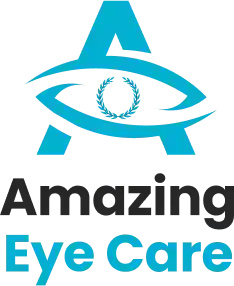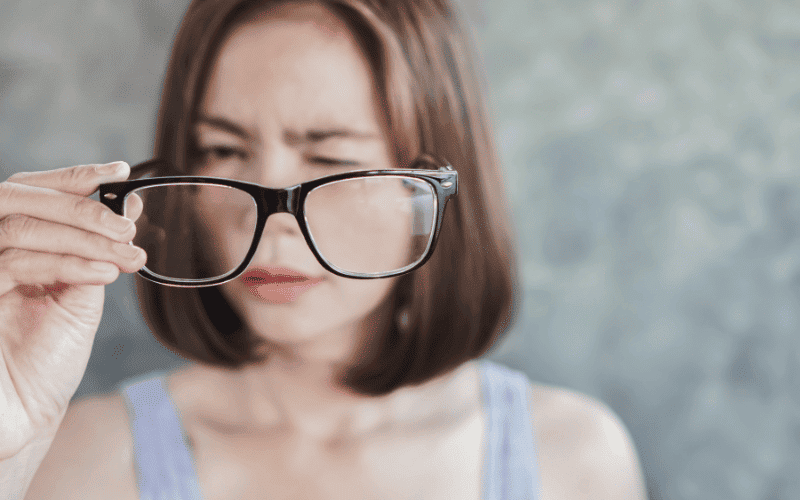Your eyes are invaluable assets, serving as your primary window to the world. Unfortunately, many vision problems develop gradually without noticeable symptoms. For this reason, routine eye exams are essential. Early detection of eye issues can prevent serious complications, improve your quality of life, and even save your sight.
In this blog, We’ll discuss the value of routine eye exams and how they can be a game-changer for your eye health. We’ll delve into common vision problems that can be detected early, the frequency of eye exams recommended for different age groups, and practical tips to maintain optimal eye health. Get ready to uncover the secrets to preserving the health of your eyes and your vision and vibrant for a long time!
The Silent Threat of Vision Problems
Numerous eye diseases, including macular degeneration, cataracts, and glaucoma, progress silently. By the time you notice symptoms, the damage may be irreversible. These circumstances may greatly affect your day-to-day activity from reading and driving to enjoying hobbies and maintaining independence.
Taking an eye exam in Atascocita is essential for identifying these conditions in their early stages when treatment is most effective. Early intervention can slow down disease progression, prevent vision loss, and preserve your overall well-being.
The Importance of Comprehensive Eye Exams
A comprehensive eye exam goes beyond checking your eyesight. It involves a thorough evaluation of your eye health, including:
- Visual acuity test: Measuring your ability to see clearly at different distances. Using a standard eye chart, you’ll read letters or symbols that decrease in size to determine the sharpness and clarity of your vision.
This fundamental test helps identify refractive errors such as nearsightedness, farsightedness, and astigmatism, ensuring you can see clearly at various distances.
- Refraction test: Determining your prescription for glasses or contact lenses. Through a series of lens comparisons, your eye doctor will identify the precise curvature and strength needed to correct your vision.
This step is essential for anyone who needs corrective lenses to achieve optimal visual clarity.
- Dilation: Examining the internal structures of your eye using eye drops to dilate your pupils. It helps the eye specialist to examine the internal structures of your eye more thoroughly.
By widening the pupils, the doctor can get improved visibility of the optic nerve and retina, and other critical components, helping to detect retinal detachment, macular degeneration, and other serious eye conditions.
- Eye pressure test: Checking for glaucoma, a disorder that damages the visual nerve and may cause blindness if untreated. By measuring the pressure inside your eye, this test helps detect elevated intraocular pressure, a major risk factor for glaucoma.
- Ocular health evaluation: Assessing the overall health of your eyes, including the eyelids, cornea, iris, lens, and retina. The eye doctor examines these structures for any signs of abnormalities, infections, or diseases.
An eye exam in Atascocita can help detect a wide range of eye problems, including:
- Refractive errors: Nearsightedness, farsightedness, and astigmatism.
- Cataracts: Clouding of the lens.
- Glaucoma: Elevated pressure within the eye that can harm the optic nerve.
- Macular degeneration: Degeneration of the central portion of the retina.
- Diabetic retinopathy: Harm to the retinal blood vessels caused by diabetes.
- Dry eye syndrome: Insufficient tear production or poor tear quality.
Benefits of Early Detection
Early detection of vision problems offers numerous advantages:
- Prevent vision loss: Many eye diseases can be treated effectively if caught early.
- Improve quality of life: Corrected vision can enhance your capacity to complete daily tasks and enjoy activities.
- Reduce the risk of accidents: Impaired vision increases the risk of falls, car accidents, and workplace injuries.
- Detect underlying health conditions: Some eye diseases can signal systemic health issues, such as diabetes or high blood pressure.
- Save money: Early treatment often prevents the need for more expensive procedures later on.
The Role of Regular Eye Exams
To protect your vision, it’s crucial to schedule regular eye exams. The frequency of exams depends on your age, overall health, and risk factors for eye disease. Generally, adults should have a comprehensive eye exam at least once every two years. However, people with certain conditions, such as diabetes or a family history of eye disease, may need more frequent exams.
If you live in Atascocita, finding a qualified eye care provider is convenient. Regular eye exam in Atascocita can help you maintain optimal eye health and enjoy clear vision for years to come.
Preserving your vision and general health requires early detection and treatment of visual issues. You may guard your vision and avoid major difficulties by making an appointment for routine eye checkups. Don’t put off getting help from a professional until you start having symptoms. Making educated decisions regarding your vision care can be facilitated with an eye exam in Atascocita, which can offer insightful information about your eye health. Never forget that your vision is a priceless gift. Make frequent eye checkups a priority in order to invest in your eye health.
FAQs On the Importance of Early Detection of Vision Problems!
1. How often should I get an eye exam?
The frequency of eye exams depends on factors like age, overall health, and family history of eye disease. Generally, adults should have a comprehensive eye exam at least once every two years. However, people with diabetes, high blood pressure, or a family history of eye problems may need more frequent exams.
2. What are the early signs of vision problems?
Early signs of vision problems can be subtle and often go unnoticed. Some common symptoms include blurred vision, difficulty seeing at night, halos around lights, floaters, and eye pain. It’s important to note that these symptoms may indicate various eye conditions, so a comprehensive eye exam is necessary for accurate diagnosis.
3. Can eye problems be a sign of other health issues?
Yes, certain eye conditions can be indicators of underlying health problems. For example, diabetic retinopathy is a common complication of diabetes, and glaucoma can be associated with high blood pressure. Regular eye exams can help detect these conditions early on, allowing for appropriate management.
4. Is it necessary to get an eye exam if I wear glasses or contacts?
Yes, even if you wear glasses or contacts, it’s crucial to have regular eye exams. Your prescription may change over time, and underlying eye conditions can develop without noticeable symptoms. Regular check-ups help ensure that your vision is corrected optimally and that your eye health is maintained.
5. Can early detection of vision problems save money?
Absolutely. Early detection and treatment of eye problems can often prevent more serious conditions from developing, which can lead to costly procedures or even vision loss. Regular eye exams can help identify issues early on when treatment is less invasive and more affordable.


